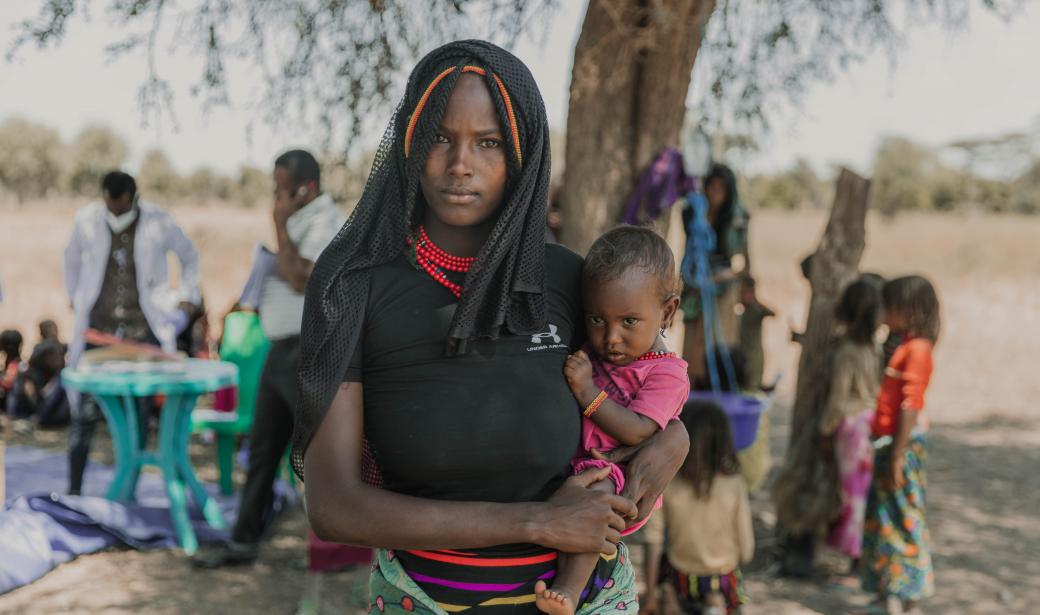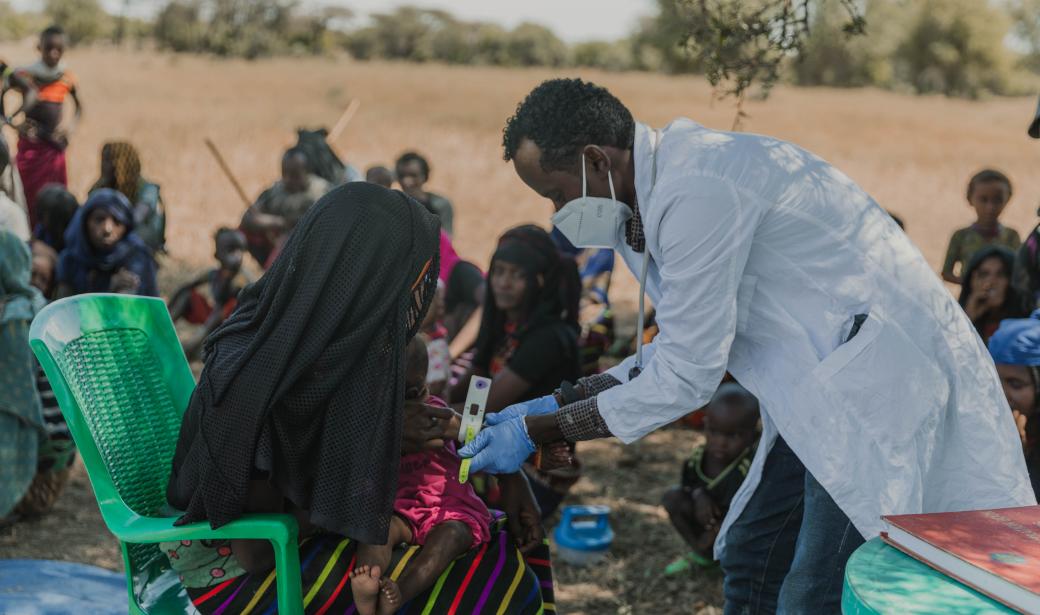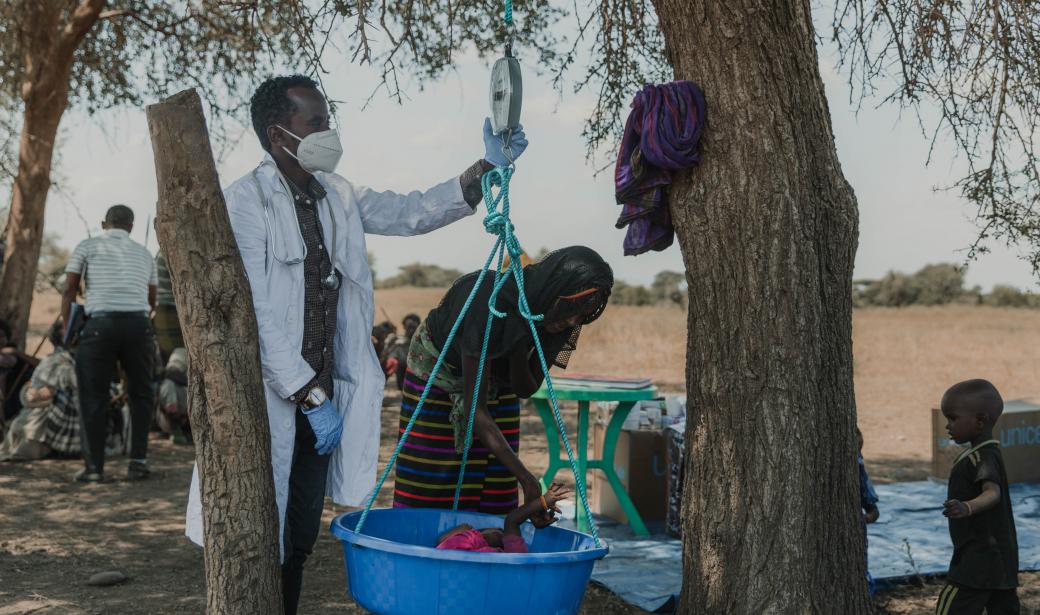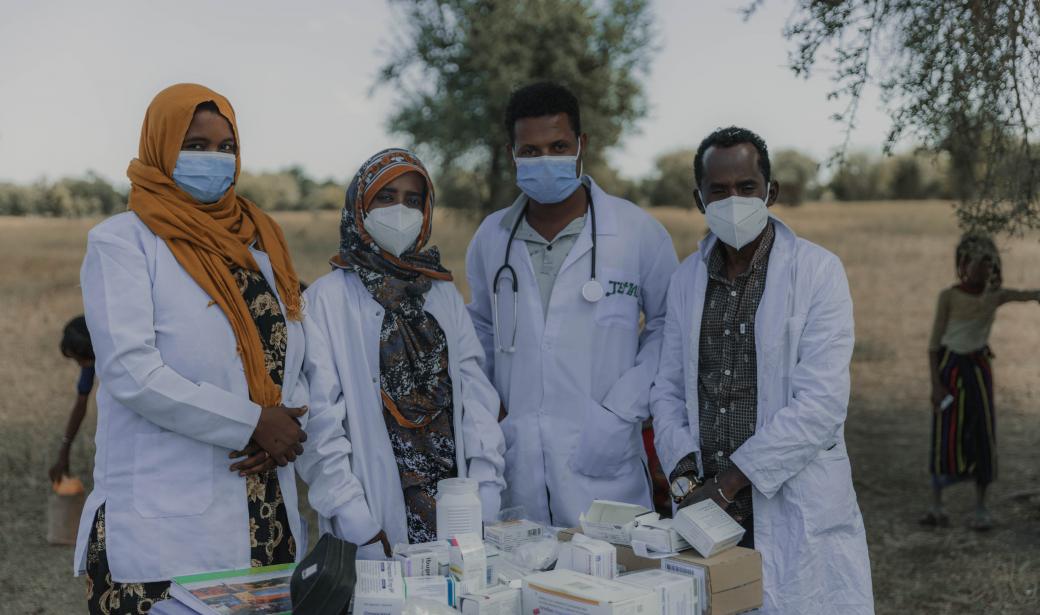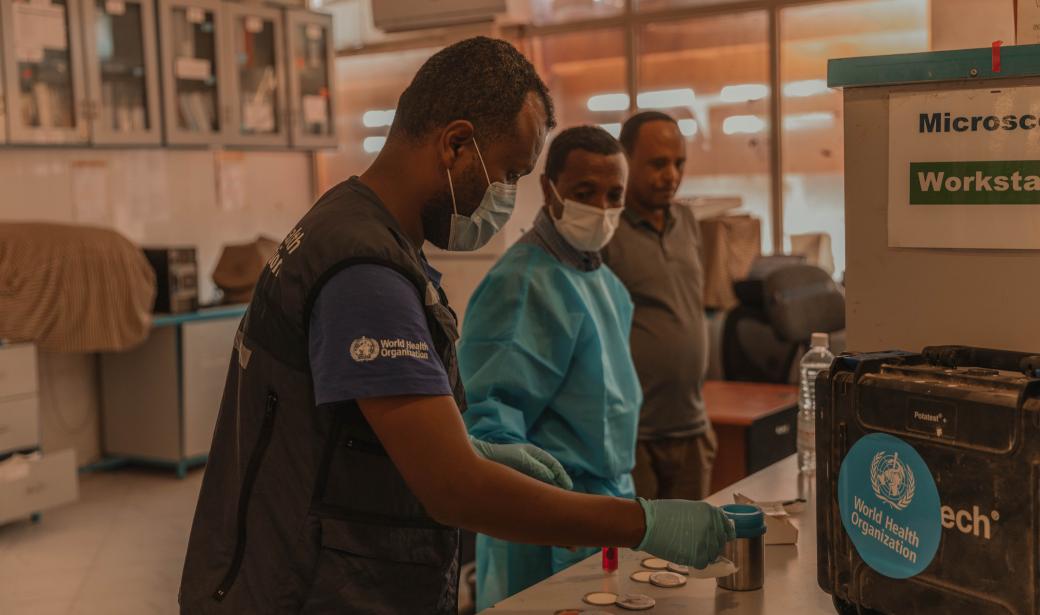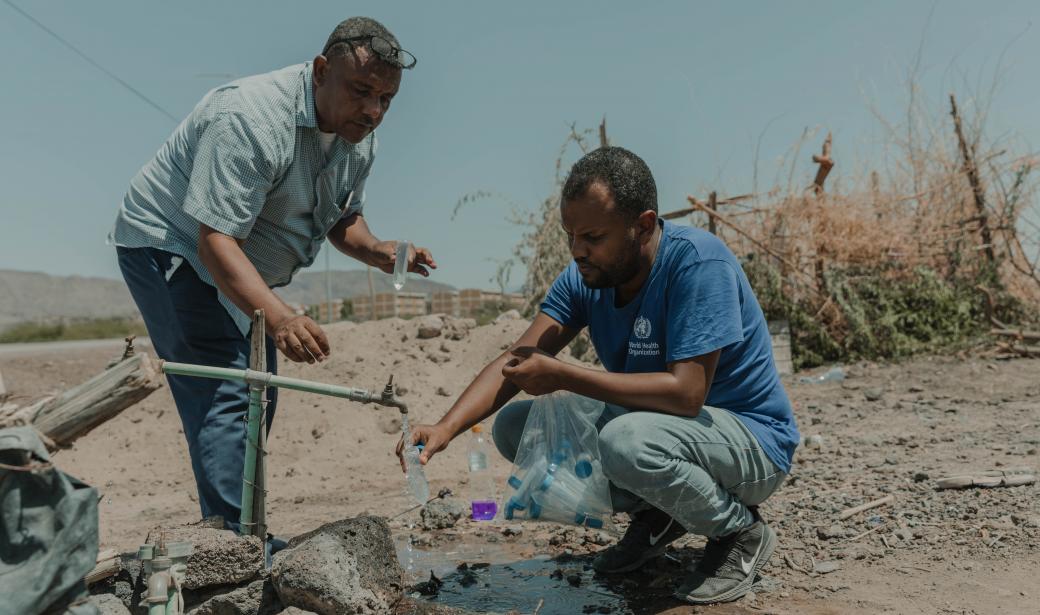Addis Ababa, Ethiopia – Prolonged drought in parts of the greater Horn of Africa region has devastated millions of lives. In South and south-eastern Ethiopia, around 24 million people are grappling with severe food insecurity, malnutrition and extreme deprivation as their livelihoods have been severely affected following five straight seasons of failed rains.
Most of the drought-affected people are nomadic pastoralists who now require humanitarian assistance to survive. Since early 2022, the number of people earmarked for this assistance has almost tripled from 8.1 million.
Deep in the remote drought-gripped areas of Ethiopia, mobile health and nutrition teams, with support from World Health Organization (WHO), are working to deliver critical health assistance and treat malnutrition to avert an extreme situation and curb potential loss of life, especially among children for whom the combination of malnutrition and disease can be fatal.
Health workers are busy setting up plastic tables under the shade of thorn trees and stocking them with medical supplies and equipment that will needed for the busy day ahead.
Temira is happy that she does not have to travel far to seek health services. "This clinic is located near my home, so I can easily bring Zahara here," she says. "When I am not feeling well, I also receive health services here."
Every Wednesday, as part of their outreach efforts, Ahmed and his colleagues examine between 100 and 120 children. “Most of the children we treat come with malnutrition, diarrhoea or malaria,” he says.
Currently, there are multiple, simultaneous disease outbreaks in the country, including cholera, measles, suspected meningitis and malaria, which are most severe in the five drought-affected regions. Of the 8821 measles cases detected in the country between 1 January and 31 December 2022, 87% were in these regions.
Inadequate water, sanitation, and hygiene facilities also contribute to the spread of water-borne diseases. Currently there is a cholera outbreak in the drought-stricken Oromia and Somali regions. They account for all 1127 of Ethiopia’s cumulative cholera cases counted between 27 August 2022 and 6 February 2023.
This team is one of five that WHO directly supports by covering operational expenses, providing medical supplies and training.
“I am very happy to be part of this mobile health team because this location is quite remote. Were it not for this team, people would not have easy access to health care,” says Ahmed.
“While a lot is being done, there are still major challenges to mounting a robust response, due to a large funding gap,” says Dr Betty Lanyero, WHO’s Incident Manager for the drought response in Ethiopia.
“Currently, there are 73 WHO staff deployed to affected regions to support the drought response, including the measles and cholera outbreaks” says Dr Patrick Abok, WHO team lead for Emergency Preparedness and Response in Ethiopia.
Part of WHO’s work to mitigate the impact of the floods is to monitor water quality, provide water purification tablets and conduct training to improve water, sanitation, and hygiene in collaboration with respective health bureaus in Ethiopia.
“We need to strengthen access to essential health and nutrition services, especially for displaced people,” says Dr Nonhlanhla Rosemary Dlamini, WHO Representative a.i. in Ethiopia. “To do this, we need to build long-term, flexible funding and resilient and durable health systems.”
Communications Officer
WHO Ethiopia
Email: gebremichaela [at] who.int (gebremichaela[at]who[dot]int)
Communication Officer
WHO Regional Office for Africa
Email: ridgardn [at] who.int (ridgardn[at]who[dot]int)
Tel: +254 11 289 0666



